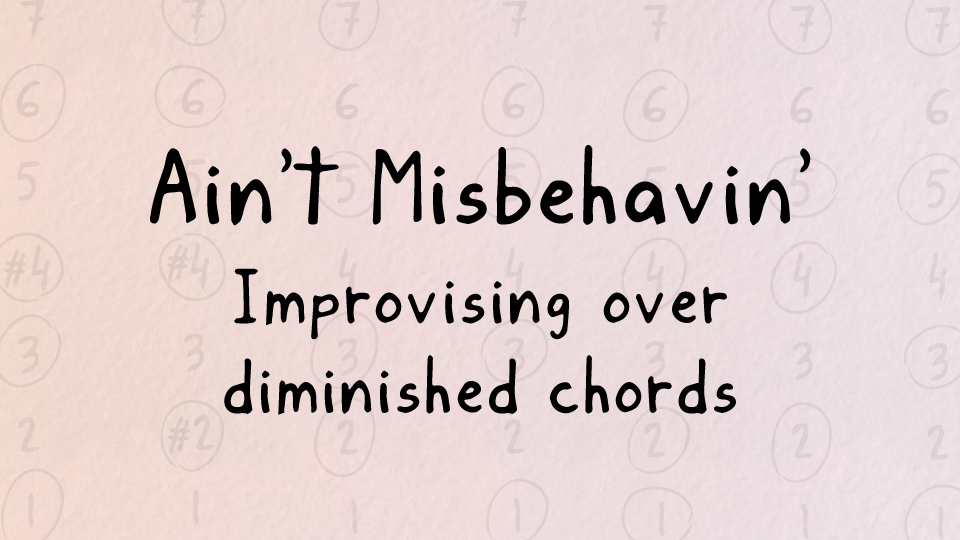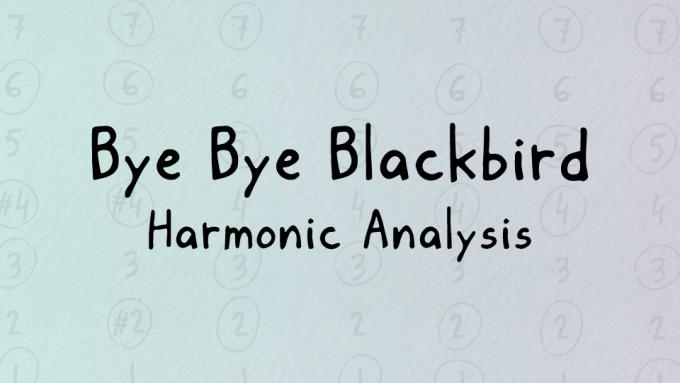The opening line of Fats Waller's classic Ain't Misbehavin' gives us an opportunity to understand one of the most common uses of diminished chords, and how to create these sounds in our own improvisations.
Here is a tonal sketch of the opening bars:

One of the most common questions I get from students is about how to analyze diminished chords to determine the overall scale that best represents the harmony of the moment. In this article we're going to explore this question in two ways. First I'll show you my own take on these chords so that you can immediately begin to explore these sounds for yourself. But then I'll show you a more honest way that you can decide for yourself what the true harmony should be.
1) My own analysis:
If I ever have any doubts about the notes that make up a particular harmonic environment, I always try to resolve these doubts by going directly to the highest authority, which is of course my ear. Essentially I just need to run through the singing activity that appears in the chapter "Understanding Begins with Listening" in my book Improvise for Real. You can also do this yourself, and I encourage all IFR students to do this for every chord that you are confused or curious about.
When I perform this exercise myself using the chords to the opening line of Ain't Misbehavin', I arrive at the following notes:
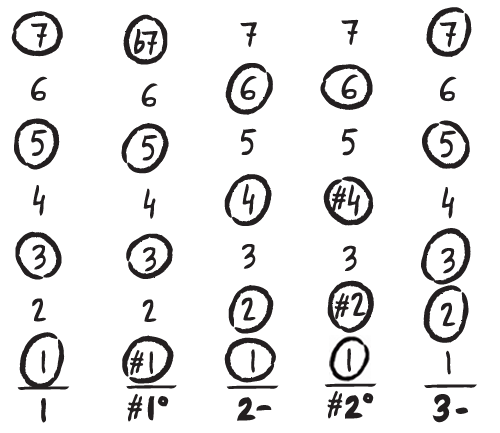
One interesting thing to notice is that the #1º chord produces the exact same scale as the altered 6D chord that appears in IFR Exercise 4. And the #2º chord produces the same scale as the altered 7D chord from Exercise 4. The drawing below shows these chords side by side for comparison:
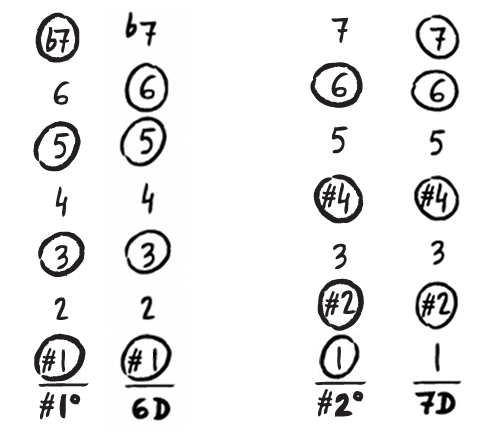
So one way to treat these diminished chords (#1º, #2º) is to simply think of them as being equivalent to the chords 6D and 7D. Since the overall harmonic environments are the same, literally the only difference comes down to the technical definition of which notes belong to the "chord". (Notice in the drawing above that the circles in the diminished chords are not in exactly the same places as the circles in the dominant chords, but the resulting scales are identical.)
For reference, below are the complete progressions from IFR Exercise 4 that I'm referring to:
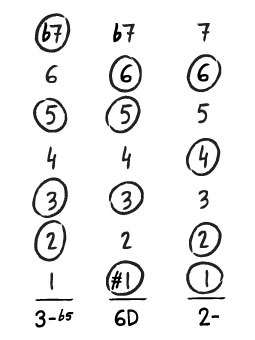

This is a good example of the principle that "harmony is as harmony does". No chord can be understood in isolation. It's only when you step back look at the entire line that you can see how a particular chord is functioning.
This is why diminished chords generate so much confusion. If you pick a random diminished chord out of the blue and you ask which scale it comes from, there's simply no way to know. But if you step back and listen to how the chord actually sounds in the context of the entire line, it's usually very easy to recognize the chord's function right away. In this case, the #1º chord performs the exact same function as 6D, and the #2º chord performs the same function as 7D.
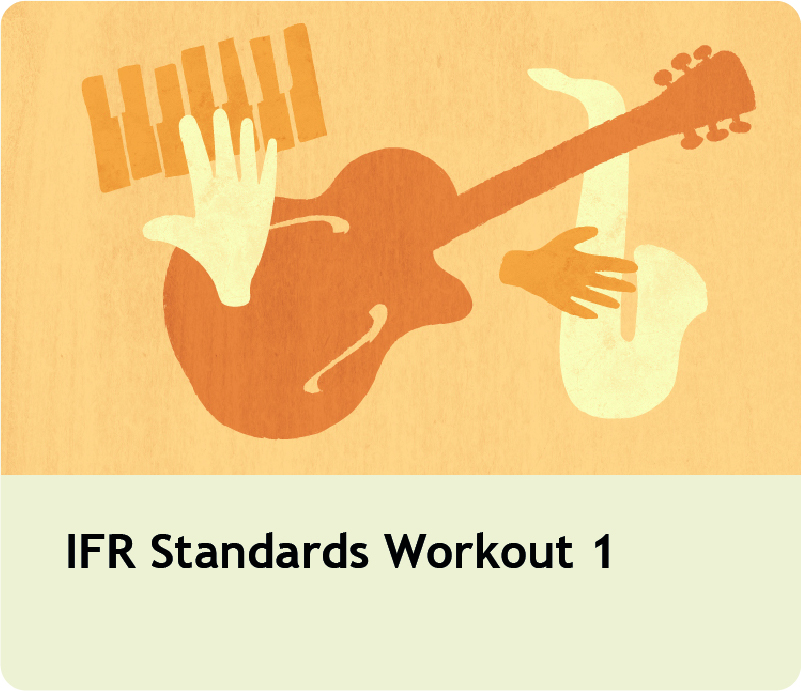 Another great example of this occurs in the tune "Black Orpheus" which we study in IFR Standards Workout 1. Measure 8 of that tune is normally written as the #1dim chord. But the harmonic function of this moment is the same as the 6D chord because it serves to prepare the 2- chord which comes immediately after.
Another great example of this occurs in the tune "Black Orpheus" which we study in IFR Standards Workout 1. Measure 8 of that tune is normally written as the #1dim chord. But the harmonic function of this moment is the same as the 6D chord because it serves to prepare the 2- chord which comes immediately after.
Improvising over diminished chords
What all of this leads us to is the understanding that the chords #1º and 6D (for example) are actually the exact same thing to the improviser. They are just two different shades of color that we can give to this moment. And because their harmonic function is identical, these two sensations are perfectly interchangeable.
One day you might be improvising over a tune that includes the 6D chord and you'll notice that the pianist or the bassist will play the #1º chord very clearly in this moment. This happens all the time. It's just a creative decision in the moment to express a particular sound and sensation.
And by the same token, as an improviser YOU are the one who decides what musical shapes to paint in your own improvisations. So the reality is that these two sounds are both available to you all the time.
To really master all of these sounds and gain confidence improvising over these diminished chords, here are three ideas to explore in your practicing:
- Improvise using JUST the chord notes of the secondary dominant chord (e.g. 6D)
- Improvise using JUST the chord notes of the diminished chord (e.g. #1º)
- Improvise using the entire scale, and notice that the distinction between diminished chord and secondary dominant no longer matters. Because the underlying scales are identical, you don't have to decide consciously whether you are playing a diminished chord or a secondary dominant chord.
